HXTECH applied common cathode for low pixel pitch LED display: T-HD taxi tops series, TVA series and SL series. How about applied common cathode technology for the most popular model like 5mm,6mm,8mm and 10mm? What would be the benefits then ?
What is common cathode LED display ?
The LED chipset has two terminals, an anode and a cathode, and each full color LEDs consists of three LED chipset. (red, green and blue).
In traditional Common Anode designs, the terminals of all 3 (red, green & blue) LEDs are wired together and an external ballast resistor is added in series with the red LED to maintain a constant voltage and equalize the voltage drop across all three LEDs. This subsequently reduces available space for the LEDs making fine pixel pitch harder to achieve, while it is also an additional heat source and accelerates the aging process and reduces the lifetime.
In Common Cathode technology, separate, dedicated power supply voltages are supplied to the red, green and blue LEDs enabling the power supplied to the red LED to be controlled separately and eliminating the requirement for a ballast resistor.
What is the benefits of common cathode for outdoor LED display ? Let us check these testing result.
Test environment:
1. Environment brightness / 1500CD
2. Environment temperature / 24 ° C
3. Temperature / 16 ° C ~ 26 ° C
4. Wind / Breeze
Test requirements: Facing the sun and white balance 255 gray scale on the display white, brightness continues to test at 6500CD.
Test items:
A. Temperature rise test
B. Color decay test
C. Power consumption test
A Temperature rise test
The temperature rise test refers to the process in which the display temperature gradually rises with the passage of time.
Temperature rise test on LEDs

Temperature rise test on PCB

Temperature rise test on IC
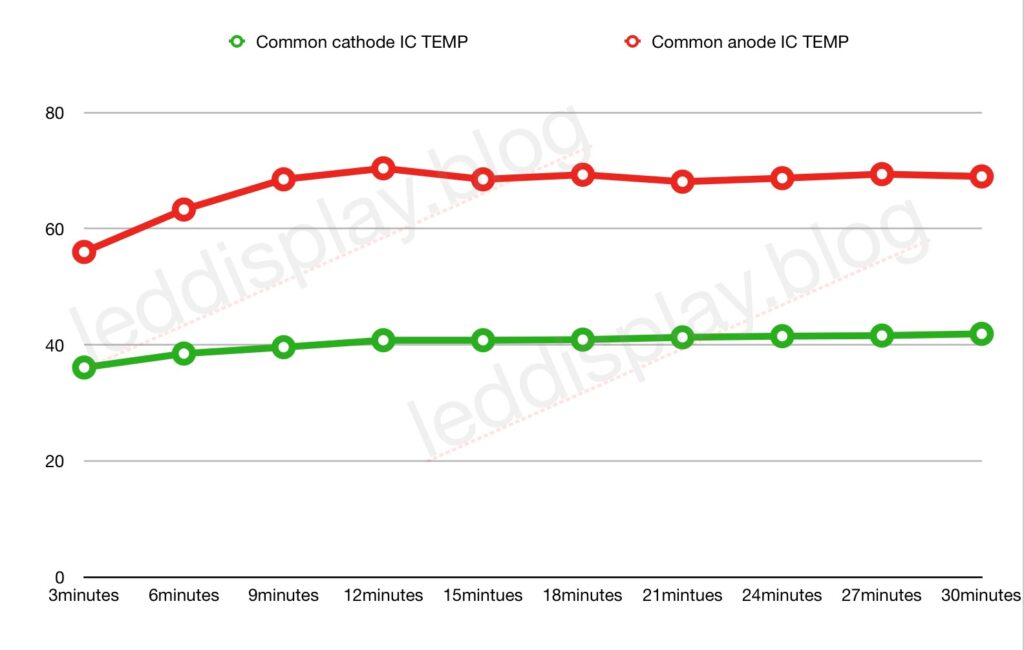
Test Results Analysis The common cathode scheme was reduced in temperature by about 20 ° C compared to the conventional common anode scheme.
B Color decay test
The color decay test means that the color gamut parameters such as display brightness, white balance coordinates, and color temperature change with temperature.
Color decay test on brightness
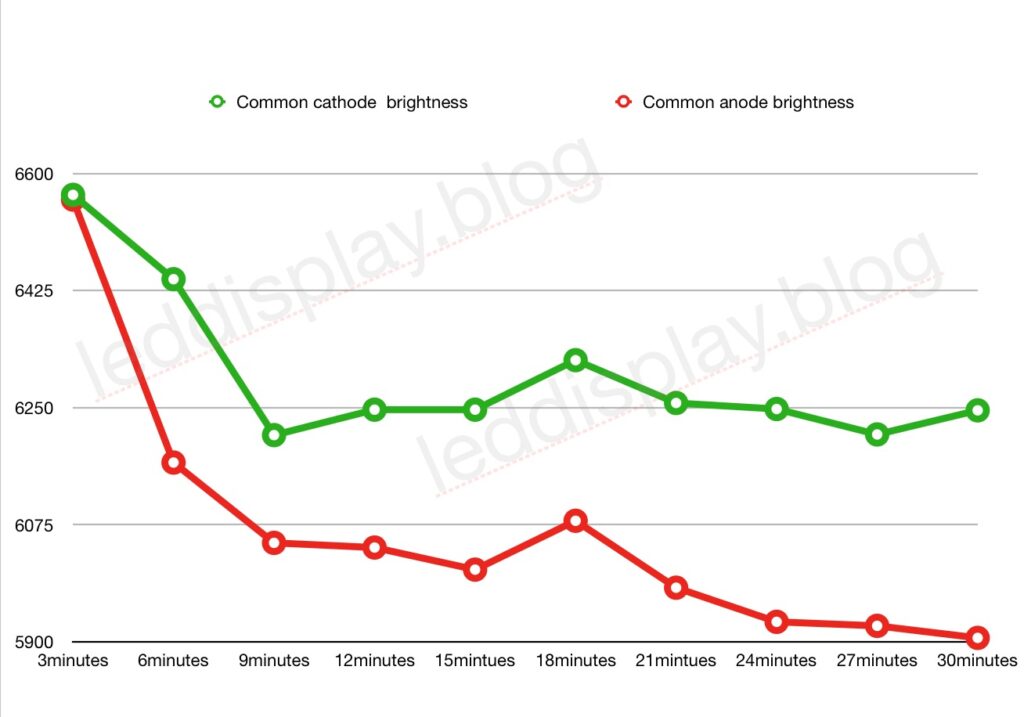
Color decay test on X-coordinate
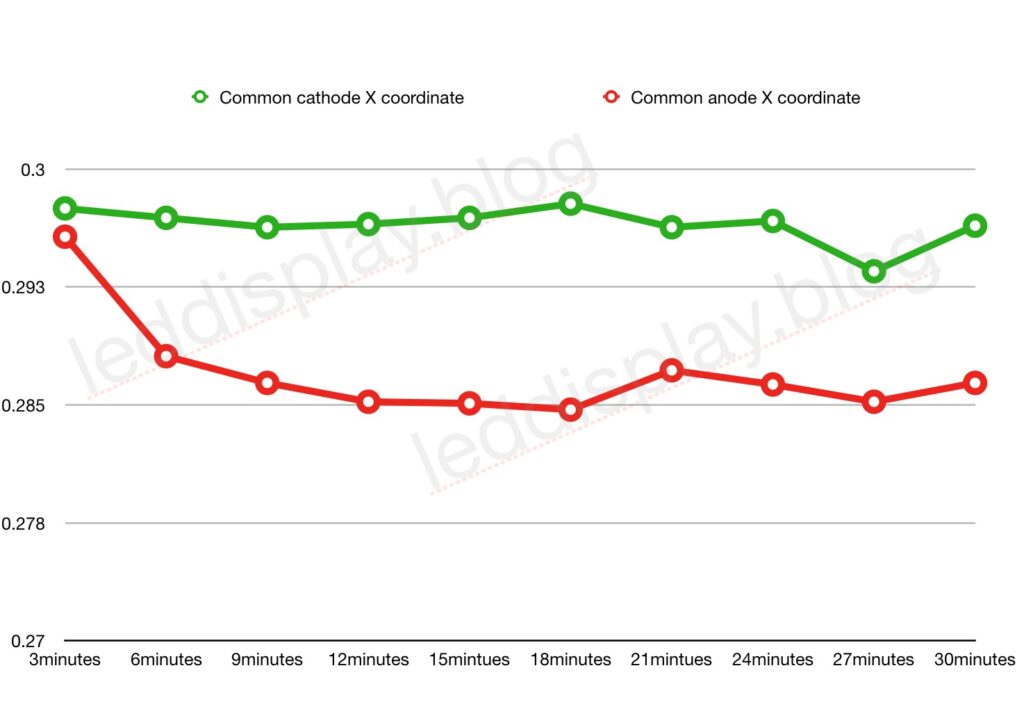
Color decay test on Y-coordinate
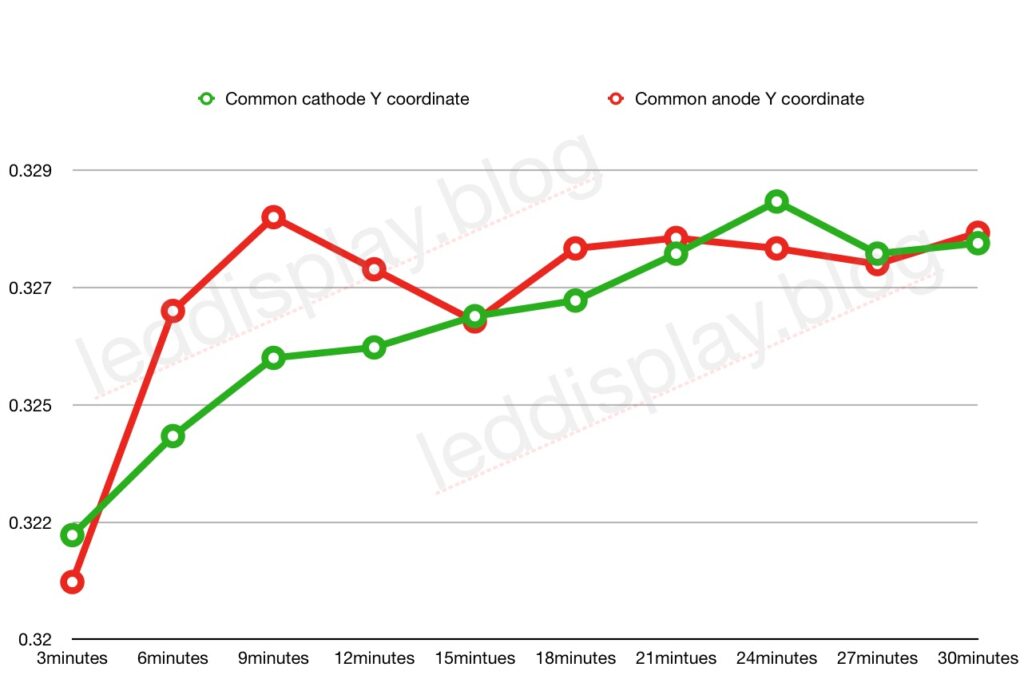
Color decay test on color temperature
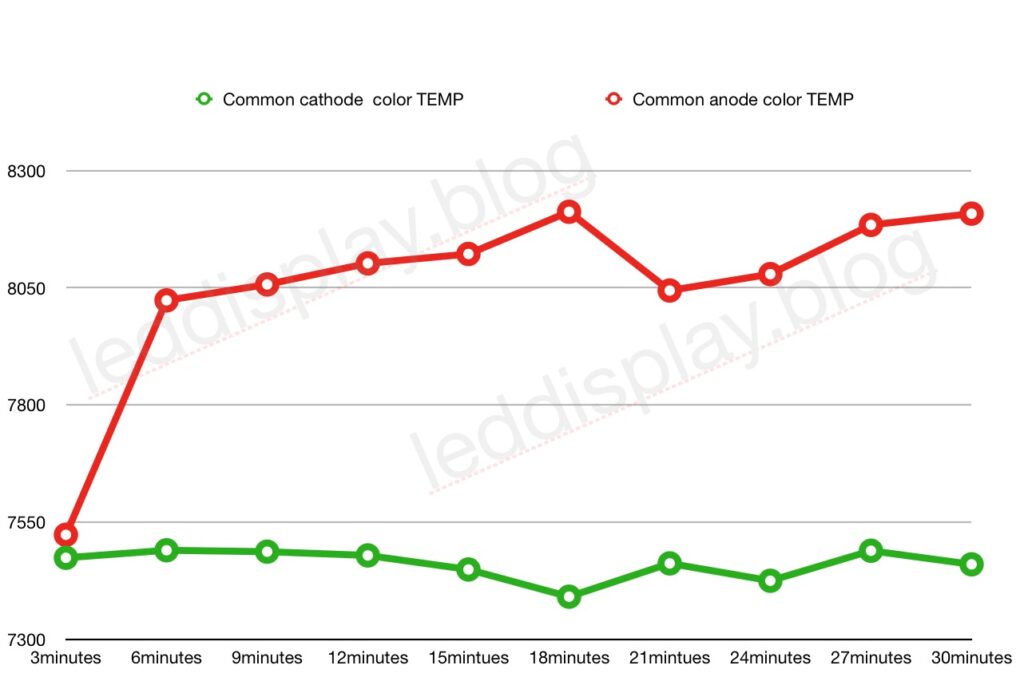
The test results analyzed that the common cathode directly improved the common anode in the color fading (brightness, color gamut, color temperature) in the temperature rising period, and maintained the color consistency at extreme temperatures.
C Power consumption test
Power testing refers to testing the power consumption of the display.
Power consumption test
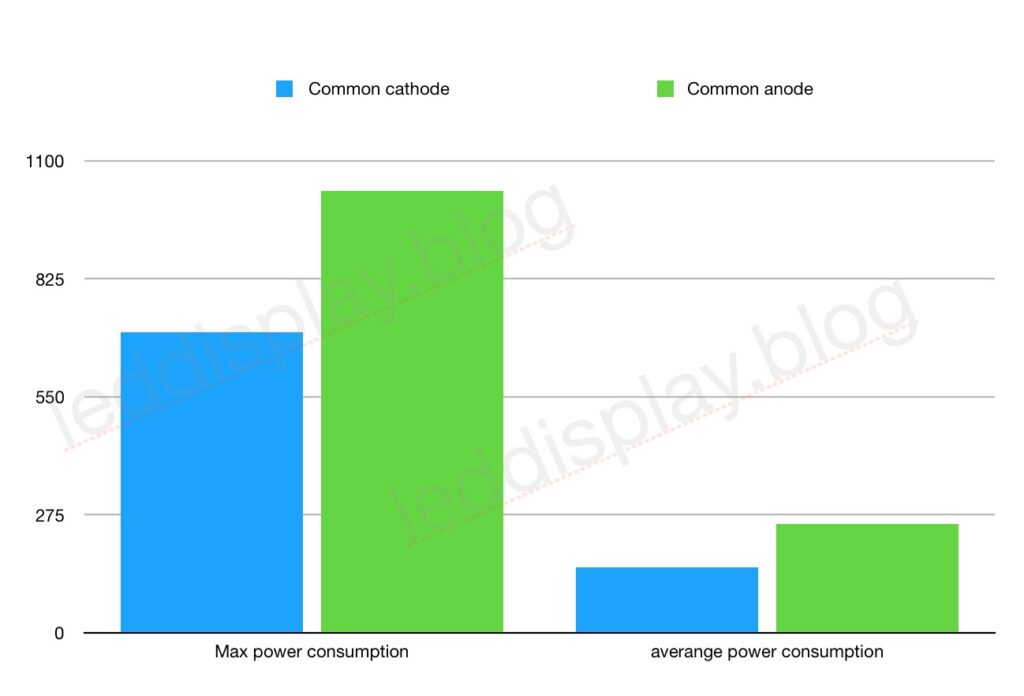
Remarks:HXTECH offers a customized chipset size LED lamp solution, we select the high brightness efficiency LEDs which can reduce the power up to 30% based on the current test result.
The test results analyze the common cathode in terms of power factor to achieve the purpose of improving the active power, and use low voltage (2.8V+3.8V) power supply in the lamp bead supply to reduce the useless power of the LED display in use. Energy saving 20% – 30%.
Through temperature rise, color decay, power consumption test comparison, the common cathode screen temperature is lower, the color consistency is better, and the power consumption is greatly reduced.
Common cathode outdoor LED display will be the next future solution for outdoor energy-saving LED display.
you have a great blog here! would you like to make some invite posts on my blog?